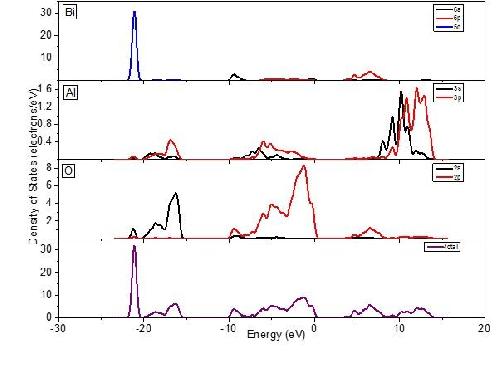Perovskite has a rhombohedral structure (or hexagonal) with formula ABO3, while belonging to the space group of R3c (number #161). They are popular in applications of functional devices, exhibiting the superconducting, piezoelectric and ferroelectric properties. BiAlO3 was also employed in improving the structural and electrical properties of BNT-based ceramics, due to the large polarization in the Perovskite structure. Furthermore, such material has been added into the PbTiO3, PbZrO3 and BaTiO3-based ceramics to improve their electrical properties. Using first principle methods, electronic and optical properties in cubic and hexagonal have been explored.
In this paper, the electronic, elastic and vibrational properties are calculated using density functional theory (DFT) with local density approximation (LDA). The elastic quantities given here are essential to indicate bonding and structural stability, based on the anisotropic quantities we evaluated.
What about this book or piece of research? To break up into two paras to shorten : In this work, We studied the crystal structure of perovskite BiAlO3 using ab initio density functional theory (DFT) calculations. Using the atomic positions given by the previous literature, we were able to create a lattice structure using state-of-art ab initio DFT software.
 This is a diagram illustrating the variation of partial density of states for bismuth, aluminum and oxygen. Credit: MPLB
This is a diagram illustrating the variation of partial density of states for bismuth, aluminum and oxygen. Credit: MPLB
Such sophisticated structure is found in rhombohedral perovskite system with space group with R3c (#161) and lattice parameter of a = b = c = 5.338?A, bond angle of α = β = γ = 60?, while treating the exchange-correlation potential with the local density approximations (LDA) method. The calculations were performed to investigate the electronic, optical, elastic and phonon properties.
The aspect of the current study is the popular research topic in perovskites ABO3 and concisely discussed. The readers will be able to grasp from this work these topics and their corresponding advances in Engineering Chemistry and Material Physics.
source: World Scientific